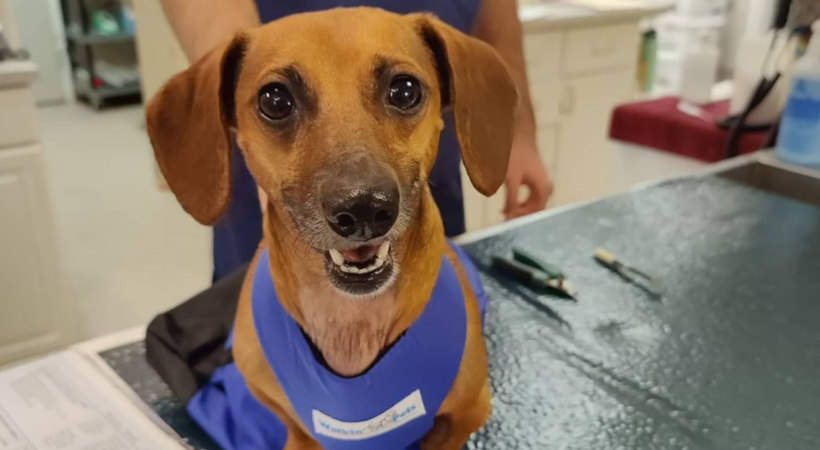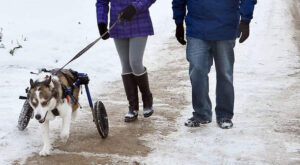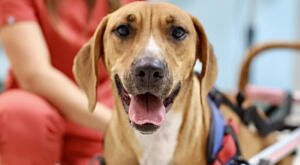As someone who has a pet, you’d probably wish that your furry kid can talk. But they can’t. So, when they’re not feeling well, they can’t tell you what’s wrong. But maybe they could, in their own way. You just have to learn how to read their body language and know how to look out for signs of distress.
The most obvious indicators of pain are, of course, howling and agonizing screeches. However, you should also take notice when your fur baby seems lethargic and without energy.
In addition to that, to be a conscientious pet owner, you should know what to do in case of emergencies. Knowing these few critical things may allow you to save the life of your pet in cases of emergencies:
- Phone number of your vet, vet clinic, and the directions to the clinic. If you’re anywhere near Idaho Falls, find a local vet for a reliable and trusted vet.
- Essential pet CPR.
- Muzzle that fits your dog and how to properly use it.
- Phone number of Animal Poison Control Center.
Twelve Common Signs Your Pet May Need To Go To The Vet
Pet owners know their pet best; they know when their pet is showing unusual behavior. When pets do something uncharacteristic, it’s usually enough to trigger alarm bells in their heads. Don’t ignore these alarm bells—it’s always prudent to err on the side of caution.
Here are 12 signs that your pet may require vet care:
1. Change In Eating Habits
A dog or any other pet sometimes skip a meal or two, especially on a hot day. If this behavior continues for more than a couple of days, something could be wrong. Do note that a healthy pet has a healthy appetite.
Bear in mind, though, that you should know how much your pet eats—what’s a typical serving for them. Are you worried that your pet might not be eating the recommended serving stated in the food packaging? You shouldn’t be. It’s within normal for a healthy pet to eat only about 60% to 70% of the serving listed on the packaging.
If your pet, especially a dog, eats grass and other plants, that would constitute a change in eating habits and may cause alarm. However, this is normal. The technical term for eating things that aren’t food is pica, which could imply that your dog might have some kind of nutritional deficiency. For instance, your pooch might simply be not getting enough fiber.
However, do ensure that the grass your pet is grazing on is free from fertilizers, pesticides, or herbicides. Also, if your grazing dog is exhibiting other symptoms, like lack of appetite, constipation, diarrhea, or lethargy, contact your vet since there may be other issues.
2. Change In Drinking Habits
Around 20 to 70 ml/kg of body weight daily is the average amount of water a dog takes in. For a cat, it would be about 60 to ml/kg of body weight plus the moisture in the cat food.
Pets who eat wet food may drink less than pets who eat dry food, so you’d have to take that into account. If your pet is drinking noticeably less, it could lead to dehydration. Drinking too much, and it could be a sign of diabetes or other kidney diseases.
If you’re refilling their water bowl more than usual, and they had to go out more than normal, that would mean your pet is drinking more. Dark or bright yellow urine could either mean your pet is dehydrated or there are some issues with the kidney.
3. Coat’s Condition
A healthy pet’s coat should be shiny, soft, and thick. A coat that has bald patches or rough and dry could mean issues with your pet’s health. Skin disease or an allergy could be at fault. Or, it could be that you’re feeding your pet the wrong kind of food.
If this is the case, it’s better to check with your veterinarian.
4. Lethargy
If your dog is seemingly tired all the time and shows no interest in either playing or going out for a walk, this could mean that something is troubling them. There’s a chance that your pet could just be tired or perhaps a fever caused muscle soreness.
If their lethargy goes on for more than a couple of days, check with your vet.
5. Vomiting
Vomiting is not always a cause for alarm, especially for dogs. They might just be trying to expel something that didn’t agree with them. But it could also mean something else, especially if your pet is vomiting several times in a row, vomiting blood, and has a fever.
Continuous vomiting could indicate the presence of a virus, endocrine diseases, pancreatitis, organ failure, intestinal obstructions, and could cause dehydration or even diarrhea. These symptoms mean your pet needs vet care immediately.
Firm, small, and moist stools are the characteristics of a healthy pet stool. Anything else could be a sign of trouble, like issues with their diet or dehydration.
You should take your pet to the vet if you notice any one of these symptoms
- Worms
- Persistent diarrhea
- Straining
- Blood or mucus in the stool
7. Unexplained Weight Loss
A pet who lost weight abruptly is a cause for concern since this could mean a serious health issue. If your pet loses 10% of their normal weight, visit a vet immediately. For small dogs, a ‘sudden’ weight loss could mean as little as a pound.
8. Eye Discoloration
For some pet owners, eye discoloration is easily noticeable. Dogs, especially, no matter their age, use their eyes to cajole their humans into giving them what they want. Healthy dogs have eyes that are bright and clear; corners are crust-free, and no discharge nor tearing. They have pink lower eyelids—not white, not red, just a healthy shade of shiny pink.
If you notice something off about their eye color, have your vet check them out. A variety of things can cause eye discoloration, but there are eye diseases that can advance quickly and cause blindness.
9. Scooting or Dragging Their Bottom
A dog who persistently drags their bottom across the ground or floor could have worms. An infected or blocked anal sac could also be the culprit. It might even be diarrhea or a urinary tract infection. But what their telling you is they need their rear checked out by a vet.
Smaller breed dogs are susceptible from anal sacs that are either inflamed, abscessed, or blocked. Scooting is their way of relieving pain or discomfort. Your pet could also, besides scooting, lick or chew around the area. The anal area could also be inflamed or your pet may have trouble moving their bowel.
10. Excessive Licking
A cat who licks themselves too much could point to something more serious. Excessive licking could mean itching in the area or there’s something painful below the skin. It could also mean fleas or allergy.
Allergy could also cause a dog to lick their paws between the claws, between the hips, and the area around her tail. Sometimes, you might even notice your dog licking odd objects, like floor or walls, and often wets her lips. A gastrointestinal disorder could cause this.
11. Coughing
Your pet’s persistent coughing can be very distressing for you and especially for your pet. Coughing has many causes, and your pet would have to be examined, tested, and treated by your vet. It may not be serious, but you would want critical illnesses ruled out.
Possible reasons for your pet’s cough include heartworm, heart disease, asthma, lung disease, neoplasia, or kennel cough (in dogs).
12. Changes In Behavior
A pet owner quickly notices a pet’s sudden change in behavior. If a pet starts to act strangely, it could be a sign that something is wrong. Your good boy or girl that suddenly turned aggressive, became restless, or started staring at walls, could be worrisome. Be patient with her, and don’t assume that these actions are behavioral problems.
Take note that a dog staring at walls can be showing signs of dog dementia, or cognitive dysfunction syndrome (CDS). Make an appointment with the vet and have your furry kid assessed by the vet.
Conclusion
Unlike human children, your fur babies cannot use words to inform you which parts of their bodies are in pain. With this in mind, you must rely on observing your pet’s behavior to get insights on what they might be feeling right now.
Changes in their eating and drinking habits as well as in their behavior are signs that you need to bring them to the vet. Their physical appearance, such as the condition of their eyes and coat, can also give you an idea of the things that are giving them discomfort or pain.
Digestive problems, like vomiting, having abnormal stool, and unexplained weight loss may also be indicators of a more complex health issue. You should be wary of antsy behavior, such as scooting or dragging their bottom, and excessive licking as well.


Related Articles
Did we answer all your questions on "Going to Vet"?









